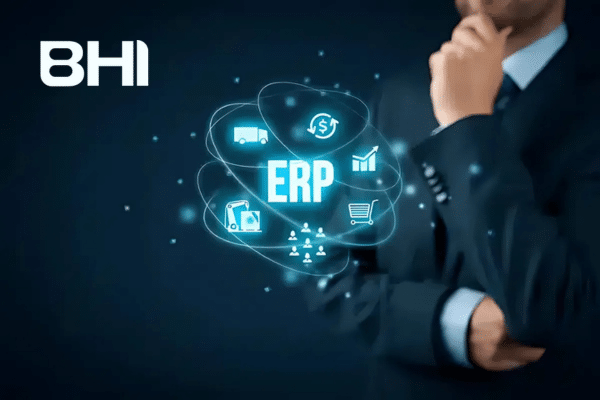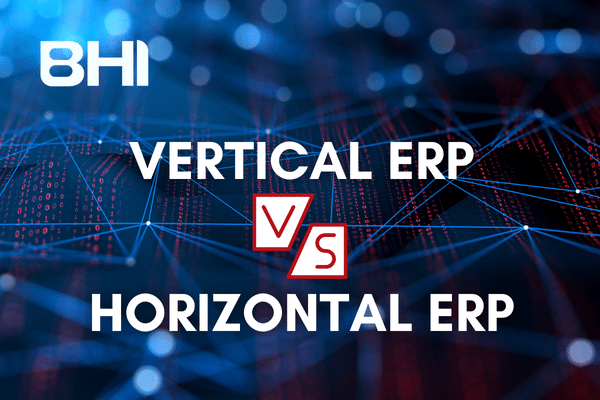Enterprise resource planning (ERP) systems are essential for companies seeking to integrate and manage their business processes. With the evolution of technology, companies now have a choice between two main deployment models: cloud ERP and on-premise ERP. Each of these models has specific advantages and disadvantages that can influence the decision depending on the company’s needs.
Cloud ERP
ERP in the cloud, also known as ERP SaaS (Software as a Service), are hosted on remote servers and accessed via the Internet. Here’s an in-depth look at the pros and cons of this solution.
Advantages of cloud ERP
1. Low initial costs
Cloud ERP generally requires lower upfront costs than on-premise solutions, as there’s no need to invest in expensive hardware or IT infrastructure. Companies pay a monthly or annual subscription fee, which provides greater cost predictability.
2. Accessibility and flexibility
Cloud-based ERP offers enhanced accessibility, enabling users to connect to the system from anywhere, at any time, as long as they have an Internet connection. This flexibility is particularly beneficial for companies with remote employees or international teams.
3. Automatic updates
Cloud service providers manage software updates and security patches, ensuring that the system is always up to date with the latest features and protections. This reduces the workload on in-house IT teams and ensures better security.
4. Scalability
Cloud ERP solutions are highly scalable, enabling companies to easily adjust their resources according to their needs. Whether you need more storage or processing power, cloud ERP can quickly adapt without the need for costly hardware upgrades.
Disadvantages of cloud ERP
1. Dependence on the Internet
One of the main disadvantages of cloud ERP is its dependence on a stable Internet connection. In the event of a network failure, access to the ERP system can be interrupted, which can disrupt business operations.
2. Security and privacy issues
Although cloud service providers are investing heavily in security, some companies may be reluctant to store sensitive data off-site. Concerns about data confidentiality and regulatory compliance can be major obstacles.
3. Limited customization
Cloud-based ERPs often offer fewer customization options than on-premise solutions. Companies with very specific needs may find that cloud ERPs cannot be fine-tuned to perfectly match their internal processes.
4. Long-term costs
Although initial costs are lower, subscription fees can add up over the long term. In the long term, a cloud solution can become more expensive than an on-premise system, especially for large companies with many users.
On-Premise ERP
On-premise ERPs are installed locally on company servers and hardware. Let’s take a look at the advantages and disadvantages of this deployment model.
Advantages of On-Premise ERP
1. Total control
On-premise ERPs offer total control over the system and data. Companies can customize and configure the software to their specific needs without the limitations often imposed by cloud solutions.
2. Security and confidentiality
With on-premise ERP, data is stored locally, which can offer a heightened sense of security for companies concerned about data confidentiality. Companies can implement specific security measures and compliance protocols tailored to their needs.
3. Customization and integration
On-premise ERPs are generally more flexible in terms of customization. Companies can integrate additional modules, create tailor-made reports and adjust functionality to precisely meet their operational requirements.
4. Long-term costs
Although initial costs are higher, on-premise ERP systems can prove more economical in the long term for larger companies. Once the initial investment has been amortized, recurring costs are generally lower than the subscription fees for cloud solutions.
Disadvantages of On-Premise ERP
1. High initial costs
Installing an on-premise ERP system requires a substantial initial investment in hardware, IT infrastructure and software licenses. These costs can be prohibitive for small and medium-sized businesses.
2. Maintenance and updates
Managing an on-premise ERP system requires a dedicated IT team for maintenance, updates and security. This can represent a significant workload and additional costs for the company.
3. Lack of flexibility
Unlike cloud solutions, on-premise ERPs are not easily accessible outside the corporate network. This can limit the flexibility of employees working remotely or on the move.
4. Limited scalability
On-premise ERPs are less scalable than cloud solutions. Adding new users or increasing storage capacity often requires additional hardware investments and complex configurations.
Conclusion
The choice between cloud ERP and on-premise ERP depends on a company’s specific needs, priorities and resources. Cloud-based ERPs offer accessibility, scalability and low initial costs, making them attractive to small and medium-sized businesses and those with a distributed workforce. On the other hand, on-premise ERPs offer total control, greater customization and can be more cost-effective in the long term for larger companies with stringent data security and confidentiality requirements.
At BHI Consulting, we understand that every business is unique. That’s why we offer personalized advice to help you choose and integrate the ERP solution that best suits your needs. Contact us to find out more about how we can help you optimize your business processes with an ERP tailored to your company.

















